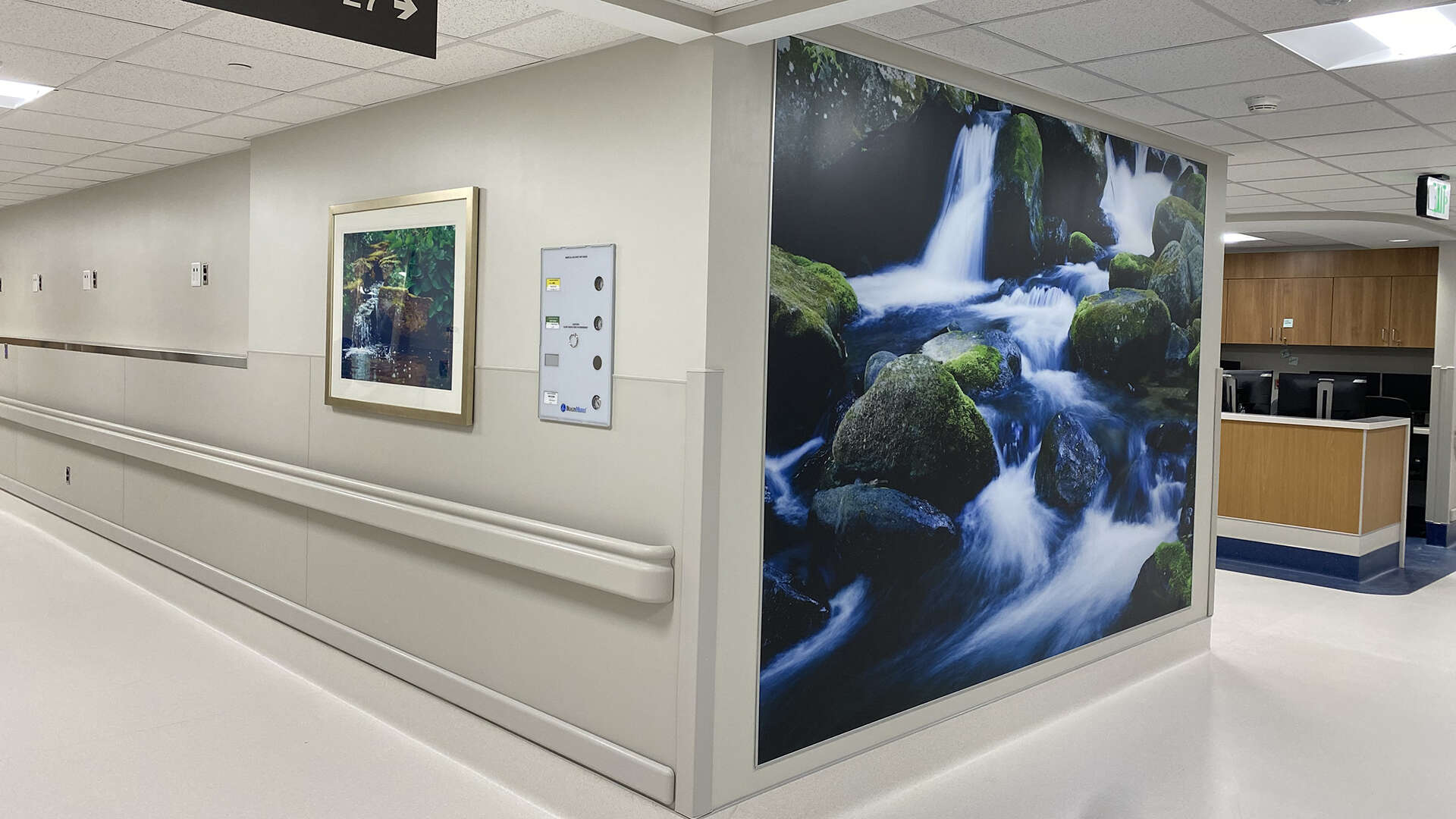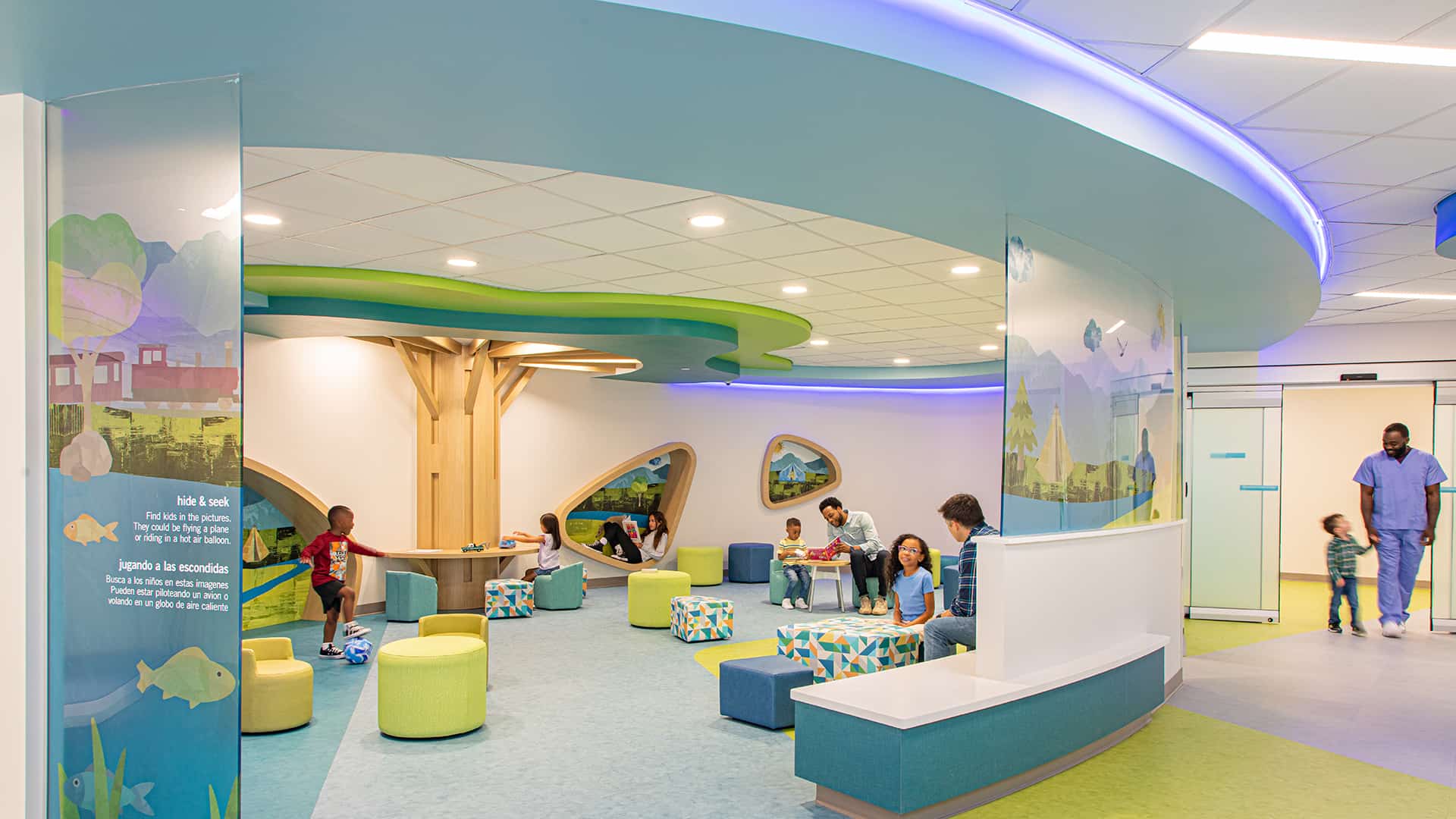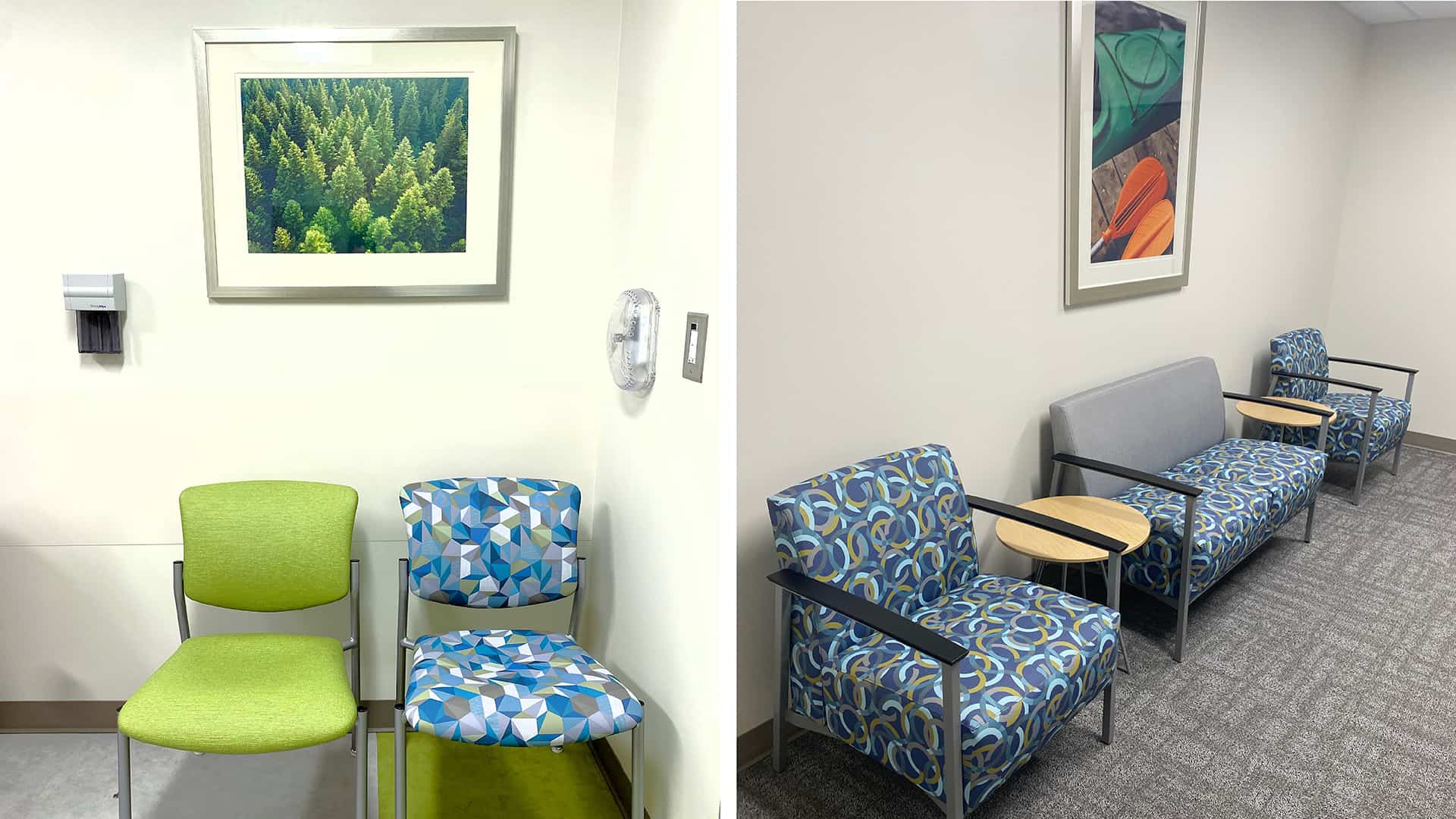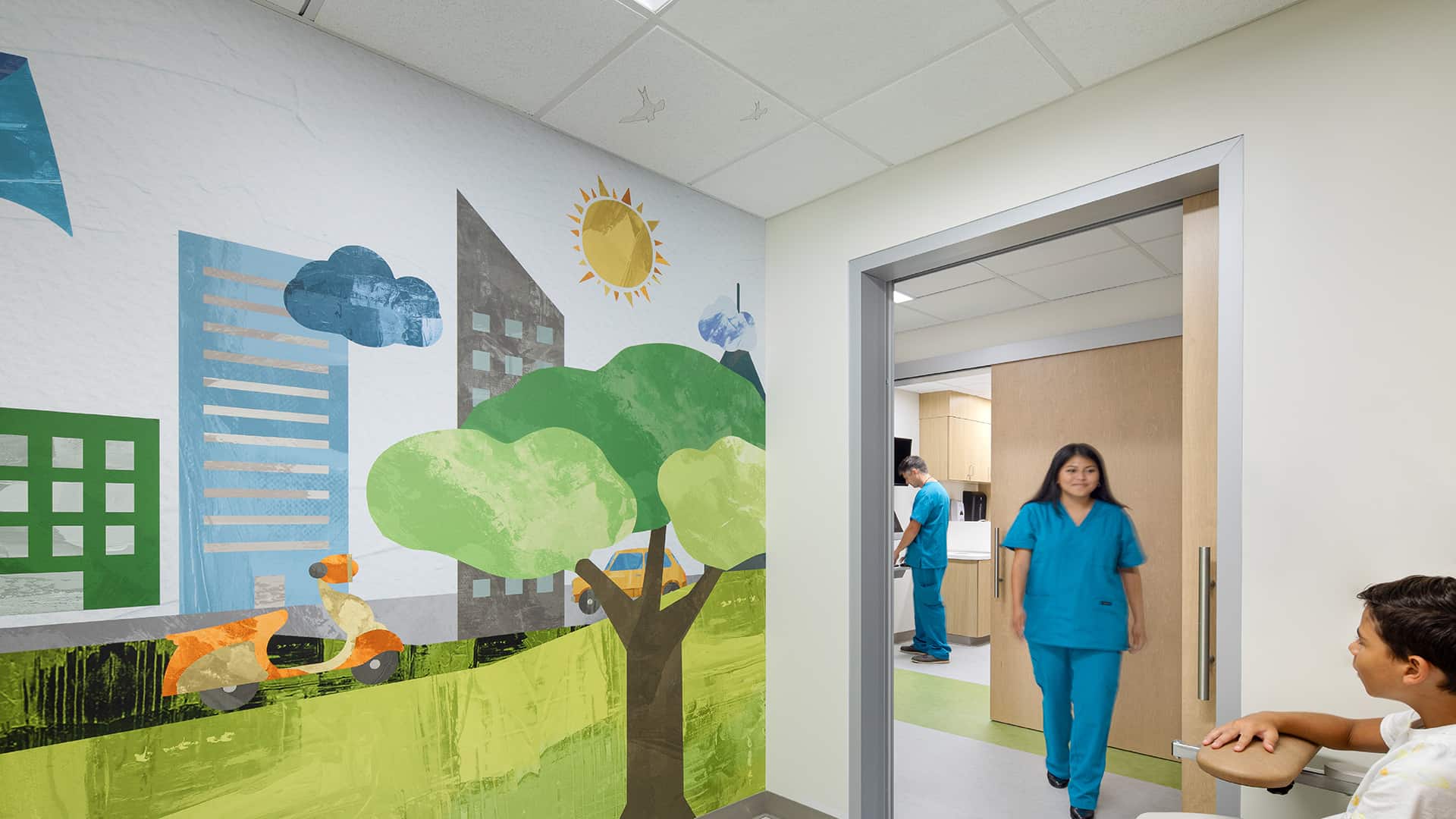Artwork plays a significant role in shaping the design of healthcare environments, impacting patients, staff, and visitors alike. However, it’s sometimes an afterthought in the design despite its potential to benefit everyone within the space.
Healthcare facilities incorporating integrated and interactive artwork into their design tend to realize the most benefits. Integrated artwork, seamlessly blending into the environment, enhances the overall aesthetic and atmosphere. Interactive artwork actively engages viewers, fostering connections and promoting relaxation. Let’s explore further how these two design approaches to art can benefit people within healthcare settings.
ART CAN REDUCE STRESS LEVELS
Artwork in healthcare environments can alleviate stress and anxiety levels among patients. This can be achieved through various display methods, including standard artwork, full graphic wall features, interior design elements, sculpture displays, interactive architectural features, and technology tools. For patients spending extended periods lying on their backs, such as in procedure rooms, incorporating design features into the ceiling tiles or graphic displays can offer visual distraction and comfort. Integrated artwork and graphics also serve as tools for wayfinding, helping individuals navigate unfamiliar environments while reducing feelings of stress, vulnerability, and loss of control.

ART CAN SERVE AS A POSITIVE DISTRACTION
Artwork can create positive distractions in healthcare environments, particularly in areas like emergency waiting rooms, where stress and uncertainty can weigh heavily on individuals. By offering a visual escape, artwork helps divert attention from worrisome thoughts and spark creativity. Nature-themed artwork, known for its therapeutic value, elicits calming feelings and contributes to emotional and physical comfort, effectively easing anxiety levels.
Interactive artwork adds an element of fun and engagement, which is especially beneficial for pediatric patients facing long waits. Interactive artwork entertains patients and accompanying siblings while promoting healing by stimulating play and exploration. This active participation empowers patients, contributing to their overall well-being. Additionally, rotating visual art displays provide variety for long-term patients, offering a refreshing change during frequent visits.

Even static artwork can serve as a source of relaxation and stress relief when designed with depth to engage viewers. In exam rooms, decorative graphic wall protection provides an interactive distraction, particularly effective for pediatric patients and their families. These creative elements contribute to a more positive and comforting healthcare experience.
ART CAN POSITIVELY IMPACT STAFF
Artwork not only benefits patients but also positively impacts healthcare staff. Views of nature and connections to outdoor settings have been shown to reduce nurse burnout, providing a much-needed respite from the demands of their work. Additionally, artwork and graphics serve as conversation starters for staff, fostering connections with patients and enhancing rapport by engaging in familiar topics. This strengthens interactions and leads to positive outcomes such as reduced stress, improved mood, enhanced job performance, and decreased burnout, ultimately improving staff and patient relationships and the overall working environment.

In conclusion, artwork is a foundational element in healthcare design with far-reaching impacts. By integrating artwork elements into the architectural design, signage, graphics, architecture, and interior design are woven into a seamless environment. By selecting art that appeals to diverse demographics and integrating it thoughtfully into the design, healthcare facilities can create spaces that promote healing, comfort, and overall well-being for all who enter.

